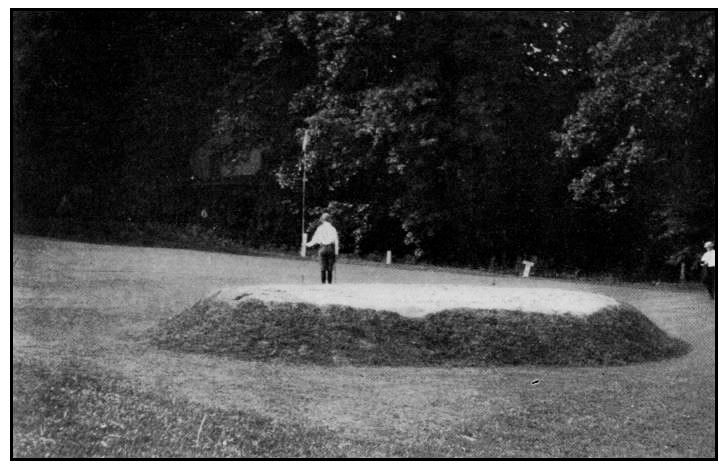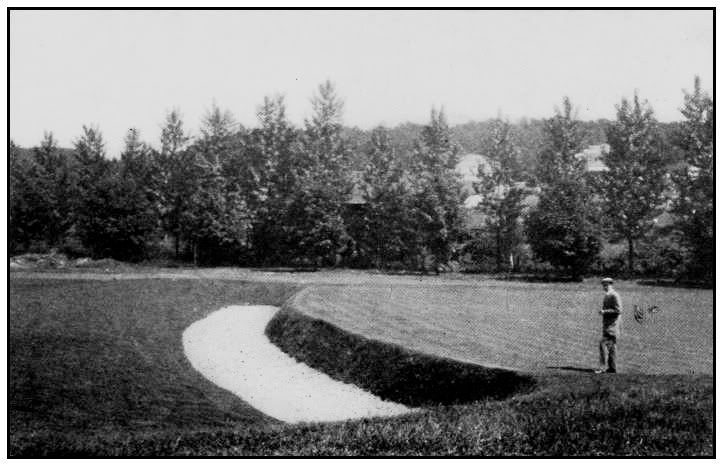David,
First question, at the time we are talking about ie. the inception of Merion, what was CBM's reputation based on ? Was it based largely on his playing record and position in the USGA and Rules Committee, or was it based on his record as a golf course architect ?
Niall, you had written:
"Yes, his involvement in golf is legendary, however most of that was in his playing and administrative roles." I took this to mean his overall reputation, and that you were not limiting it to is reputation in 1910.
Still, as strange as it may sound, his reputation was well established as the leading figure in golf design in America even in 1910. He had created the first eighteen hole course at Chicago, had been instrumental in getting other courses going in the Chicago area, and reportedly advised clubs up and down the eastern seaboard about their own courses. Plus, due to his successes, his personality, his experience in St. Andrews, his dual positions at the USGA and the Royal and Ancient, his relationships with the leading clubs and men in the game, etc., he was considered one of the foremost experts on all things golf, including courses. (Likewise, in addition to being a Champion golfer Whigham was also prominent in the development of some of the Chicago clubs, and because of this, his famous golf lineage, his writing, and his extensive experience in golf world wide, he was also considered expert on golf courses.)
And then there was NGLA. Like Pine Valley, NGLA was one of those courses which became famous before it was even completed. Only moreso. NGLA was famous before they even had a location. I believe the first article I found on the course dates to 1904, and from then on, papers around the country followed the progress. The 1906 trip abroad was covered here and abroad, and contributed to his notoriety. By the time CBM penned his "Ideal Golf Links" article in 1906, and the land was finally found and purchased in 1906-1907, and the course developed over the next few years, it was world famous in golf circles and CBM was famous for having brought it to fruition.
You have to understand that, before NGLA, it was widely believed that there were no truly first class courses in the United States. Long before it was even completed, NGLA was not only expected to be the best course in America, it was expected to be the first
World Class golf course in the US. And by 1910, it was already well on its way to fulfilling those expectations. And over its first few years of existence even a number of British experts - Hutchinson, Darwin, Ben Sayers, and others - pronounced it as good (if not better) than the best links courses. And it wasn't just that it was better, it was different. It represented a new approach to golf design based on patterning holes after the strategic principles underlying the great links courses. It instantly became the model for how things ought to be done here. In fact it became the model before it was even completed.
With someone as prominent as CBM in golf, it is difficult to divvy up his reputation between different areas. But by 1910 he 15 years beyond his prime as a player and the USGA had been long established. But CBM was known as the man behind NGLA and in golf course design this made him the the most prominent figure in America.
Second question, in terms of CBM's lasting reputation as a gca, presumably you would agree that it is largely based on NGLA but also on other courses. By and large, these other acclaimed courses, do they date from before or after NGLA ?
Not sure I agree with your presumption. While he was involved with a number of great courses, I think his prominence in golf course architecture was based primarily upon NGLA. As for other courses before and after he is known for building the first 18 hole course and the Lido was quite a big deal when it was created and for a long time after, but I don't think anything compared to NGLA. NGLA changed the game. NGLA paved the way for the golden age and it set the stage for everything following, his courses and everyone else's as well.
What those two questions are aimed at are at addressing the question debated by myself and Patrick on whether the gulf between the Merion Committee and CBM (and HJW) was as great say as between myself and TD or JB or RH
I understand, but I may even be further away from you on this than Patrick. I don't think you understand just how revolutionary NGLA was, and how it changed golf design in America. It wasn't just that NGLA was good golf course, it was an new approach to creating golf courses, at least over here. The change was so dramatic and successful that it almost completely wiped the previous era off the map. Much of that old "dark ages" stuff was other significantly altered, plowed under, or abandoned. New courses were built with an eye to strategy and ideas and interesting golf. NGLA ushered in the golden age of design over here. It started a whole new conversation. It changed the entire context.
No doubt golf design has changed since CBM built NGLA. It has certainly become more complicated. But I am not so sure that the core principles of what makes a golf course great have changed all that much. At least not compared to the changes that NGLA helped create.
Here is one way to think about it. When it comes to what makes them great, I think Tom Doak's courses have much more in common with NGLA than NGLA had in common with most of the courses in the US at the time. If reports were correct, then this was especially true of courses in and around Philadelphia. That is how significant was the change.
So in 1910 when you compare CBM to average clubman, you are likely comparing across eras. You are likely comparing someone with an enlightened view of what a golf course could be to someone who probably hadn't considered it much at all. You are likely comparing someone who had not only played great courses he had actually studied them and figured out what made them great, with someone who played most their golf on "dark ages" golf courses and probably didn't give these things much thought one way or another. These weren't common ideas. At this time, a golf course wasn't yet considered art. It wasn't a means to express sophisticated strategic concepts which had proven successful over centuries.
When Wilson said he had learned more from CBM in than he had in all his years of golf, I don't think he was exaggerating.
Just for fun, and to give you an idea of what passed for cutting edge architecture before in Philadelphia before CBM helped Wilson and co design Merion, here are few photos of a few changes made to Huntington Valley in 1909.

